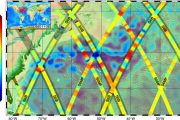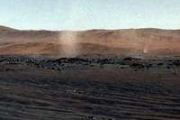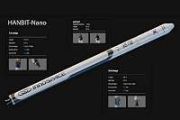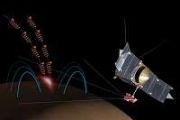
Copernical Team
Boeing to remove Starliner from rocket, months-long delay expected
 Boeing announced Friday that it has to send its troubled CST-100 Starliner capsule to a factory for repairs, delaying an unmanned test flight to the International Space Station (ISS) for several months.
The spacecraft had been due to launch from Cape Canaveral, Florida, on August 3 on an Atlas V rocket built by United Launch Alliance but the flight was delayed because of problems with four p
Boeing announced Friday that it has to send its troubled CST-100 Starliner capsule to a factory for repairs, delaying an unmanned test flight to the International Space Station (ISS) for several months.
The spacecraft had been due to launch from Cape Canaveral, Florida, on August 3 on an Atlas V rocket built by United Launch Alliance but the flight was delayed because of problems with four p Business growth scheme open to next group of space entrepreneurs
 A pioneering programme to help firms find their place in space has given a total of 31 businesses a 900,000 pounds boost and created new jobs - and the search is now on to find the next group of entrepreneurs.
Twenty businesses will be supported on the next phase of the Leo Programme, a free six-month accelerator run by the UK Space Agency and powered by Entrepreneurial Spark, where they w
A pioneering programme to help firms find their place in space has given a total of 31 businesses a 900,000 pounds boost and created new jobs - and the search is now on to find the next group of entrepreneurs.
Twenty businesses will be supported on the next phase of the Leo Programme, a free six-month accelerator run by the UK Space Agency and powered by Entrepreneurial Spark, where they w Traces of Ceres' icy crust found at Occator Crater
 Anomalies in the distribution of hydrogen at Occator crater on the dwarf planet Ceres reveal an icy crust, says a new paper led by Tom Prettyman, a Senior Scientist at the Planetary Science Institute.
The evidence comes from data acquired by the Gamma Ray and Neutron Detector (GRaND) aboard NASA's Dawn spacecraft. A detailed map of the concentration of hydrogen in the vicinity of Occator w
Anomalies in the distribution of hydrogen at Occator crater on the dwarf planet Ceres reveal an icy crust, says a new paper led by Tom Prettyman, a Senior Scientist at the Planetary Science Institute.
The evidence comes from data acquired by the Gamma Ray and Neutron Detector (GRaND) aboard NASA's Dawn spacecraft. A detailed map of the concentration of hydrogen in the vicinity of Occator w On chaos, drunks and a solution to the chaotic three-body problem
 The three-body problem is one of the oldest problems in physics: it concerns the motions of systems of three bodies, like the Sun, Earth and the Moon - how their orbits change and evolve due to their mutual gravity. The three-body problem has been a focus of scientific inquiry ever since Newton.
When one massive object comes close to another, their relative motion follows a trajectory dict
The three-body problem is one of the oldest problems in physics: it concerns the motions of systems of three bodies, like the Sun, Earth and the Moon - how their orbits change and evolve due to their mutual gravity. The three-body problem has been a focus of scientific inquiry ever since Newton.
When one massive object comes close to another, their relative motion follows a trajectory dict NASA, Boeing to Move Starliner to Production Facility for Propulsion System Evaluation
 NASA and Boeing have decided to postpone the launch of Orbital Flight Test-2 to the International Space Station as teams continue work on the CST-100 Starliner propulsion system.
Engineering teams have been working to restore functionality to several valves in the Starliner propulsion system from inside United Launch Alliance's Vertical Integration Facility that did not open as designed du
NASA and Boeing have decided to postpone the launch of Orbital Flight Test-2 to the International Space Station as teams continue work on the CST-100 Starliner propulsion system.
Engineering teams have been working to restore functionality to several valves in the Starliner propulsion system from inside United Launch Alliance's Vertical Integration Facility that did not open as designed du DART Gets Its Wings: Spacecraft Integrated with Innovative Solar Array Technology and Camera
 Perched atop a stand in the middle of a high-ceilinged clean room, DART is beginning to look like the intrepid spacecraft that will aim itself directly into an asteroid next fall. With the addition of its compact Roll-Out Solar Arrays (ROSA) coiled into two gold cylinders that flank the sides of the spacecraft, and its less visible but still integral imager, the Didymos Reconnaissance and Astero
Perched atop a stand in the middle of a high-ceilinged clean room, DART is beginning to look like the intrepid spacecraft that will aim itself directly into an asteroid next fall. With the addition of its compact Roll-Out Solar Arrays (ROSA) coiled into two gold cylinders that flank the sides of the spacecraft, and its less visible but still integral imager, the Didymos Reconnaissance and Astero Purdue-designed heat transfer experiment arrives at International Space Station
 People who design spacecraft must prioritize two factors: reducing weight and managing extreme temperatures.
A new experiment designed by Purdue University engineers addresses both problems. The Flow Boiling and Condensation Experiment (FBCE), which arrived at the International Space Station on Thursday (Aug. 12), will soon advance the science of heat transfer in microgravity.
"Vehic
People who design spacecraft must prioritize two factors: reducing weight and managing extreme temperatures.
A new experiment designed by Purdue University engineers addresses both problems. The Flow Boiling and Condensation Experiment (FBCE), which arrived at the International Space Station on Thursday (Aug. 12), will soon advance the science of heat transfer in microgravity.
"Vehic NASA says Russian media allegations US astronaut drilled hole in ISS 'not credible'
 The claims made by Russian media that NASA Astronaut Serena Aunon-Chancellor had a nervous breakdown and damaged a Russian spacecraft to get home are not credible, Kathy Lueders, who is leading NASA's human spaceflight program, said at a press conference on Friday.
Russia's TASS recently published a story, citing an unnamed source in the Russian Space Agency Roscosmos, that claimed Aunon-C
The claims made by Russian media that NASA Astronaut Serena Aunon-Chancellor had a nervous breakdown and damaged a Russian spacecraft to get home are not credible, Kathy Lueders, who is leading NASA's human spaceflight program, said at a press conference on Friday.
Russia's TASS recently published a story, citing an unnamed source in the Russian Space Agency Roscosmos, that claimed Aunon-C Boeing astronaut capsule grounded for months by valve issue

Growing crops on Mars? Probably not under the naked sun

If humans want to live on Mars for a longer period it will be necessary to grow their own crops over there. And what is more logical than growing the crops in a greenhouse on the surface, profiting from the sunlight, as seen in many scientific designs and Sci-fi movies? However, will this be possible giving the high amount of cosmic radiation at the Martian surface level? Wageningen University & Research and the Reactor Institute Delft (RID, TU Delft) have been investigating for some time now the effect of cosmic radiation on Martian surface on plant growth. This revealed that, just like humans, plants also need to be protected from the cosmic radiation.
BSc, student Nyncke Tack investigated the effect of gamma radiation as was recorded by the Mars rover Curiosity on garden cress and rye. "Because the radiation on Mars is much higher than on Earth (230 μGy/d, about 17 times higher than on Earth) the experiment was carried out under strict safety precautions. We conducted the experiment in a special 'led castle' and in a fume hood," says Tack.




























